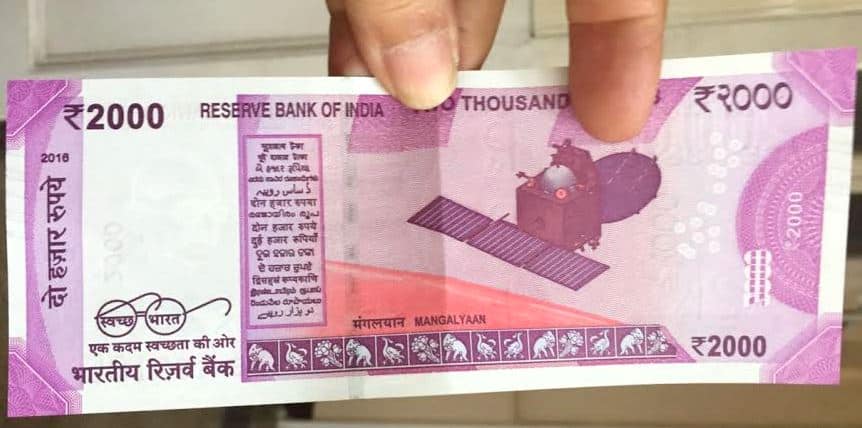
By Tushna Commissariat, James Dacey and Hamish Johnston
Nearly three years after it was successfully launched into orbit around Mars, India’s Mangalyaan orbiter has begun a new type of circulation – on a newly issued Indian banknote. Earlier this week, Indian prime minister Narendra Modi unexpectedly announced that the country’s ubiquitous Rs500 and Rs1000 notes would no longer be legal tender, effective immediately. New Rs500 and Rs2000 notes have instead be issued, the latter featuring the spacecraft.
The surprise move was made in an effort to combat counterfeit notes, corruption and tax evasion. The decision has caused chaos in a country with an economy that is still mostly cash-based. The recall has caused grief for low-income Indians, many of whom do not have official identification or even a bank account. Senior Huffington Post editor Somak Ghoshal highlighted exactly why the move smacks of elitism in his post. “Demonetisation has brought out the worst form of elitism among India’s privileged classes”. And while it’s nice to think that with the new notes, science is gaining currency in India and that millions of people will come to know the spacecraft in the years to come, the Rs2000 note is the largest denomination note in circulation. It is likely that the majority of India’s population, who live below the poverty line, will rarely see this note.
2016 has been a pretty bad year for many people – especially if you are a left-leaning fan of popular music. Hopefully it won’t come to a nuclear war anytime soon, but if you are worried about what would happen if your home town were to be hit by a nuclear weapon, we have just the website for you. Just enter your location into “Would I survive a nuke?” and select the size of weapon you are expecting.
The way political events have gone this week you may have found yourself howling at the Moon in disbelief. Well, if you’re looking to take your mind off developments here on Earth, then you should take a look at the night sky on the evening of 14 November. The Moon will be at its closest distance to Earth since 1948 – a distance of 356,508 km, leading to a “supermoon” where our closest celestial neighbour appears larger than normal.
While everyone agrees that the Moon will look pretty super, one astronomer is trying his hardest to manage the expectations of would-be stargazers. Jim Lattis, a science historian at the University of Wisconsin-Madison, explains in this article that this supermoon will appear similar to all other given the relative distances involved. “I don’t like to send people out to see something they’re not going to be able to see. There really isn’t much to see,” says Lattis. But while the supermoon may not truly blow your mind, it’s got to bring more joy than turning on the TV news. So get out there and take a look.



